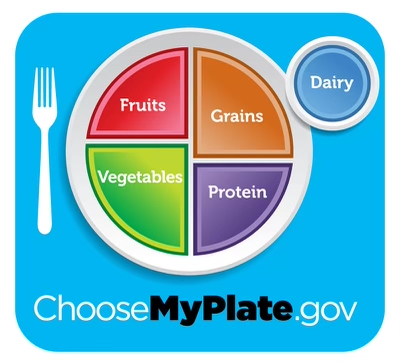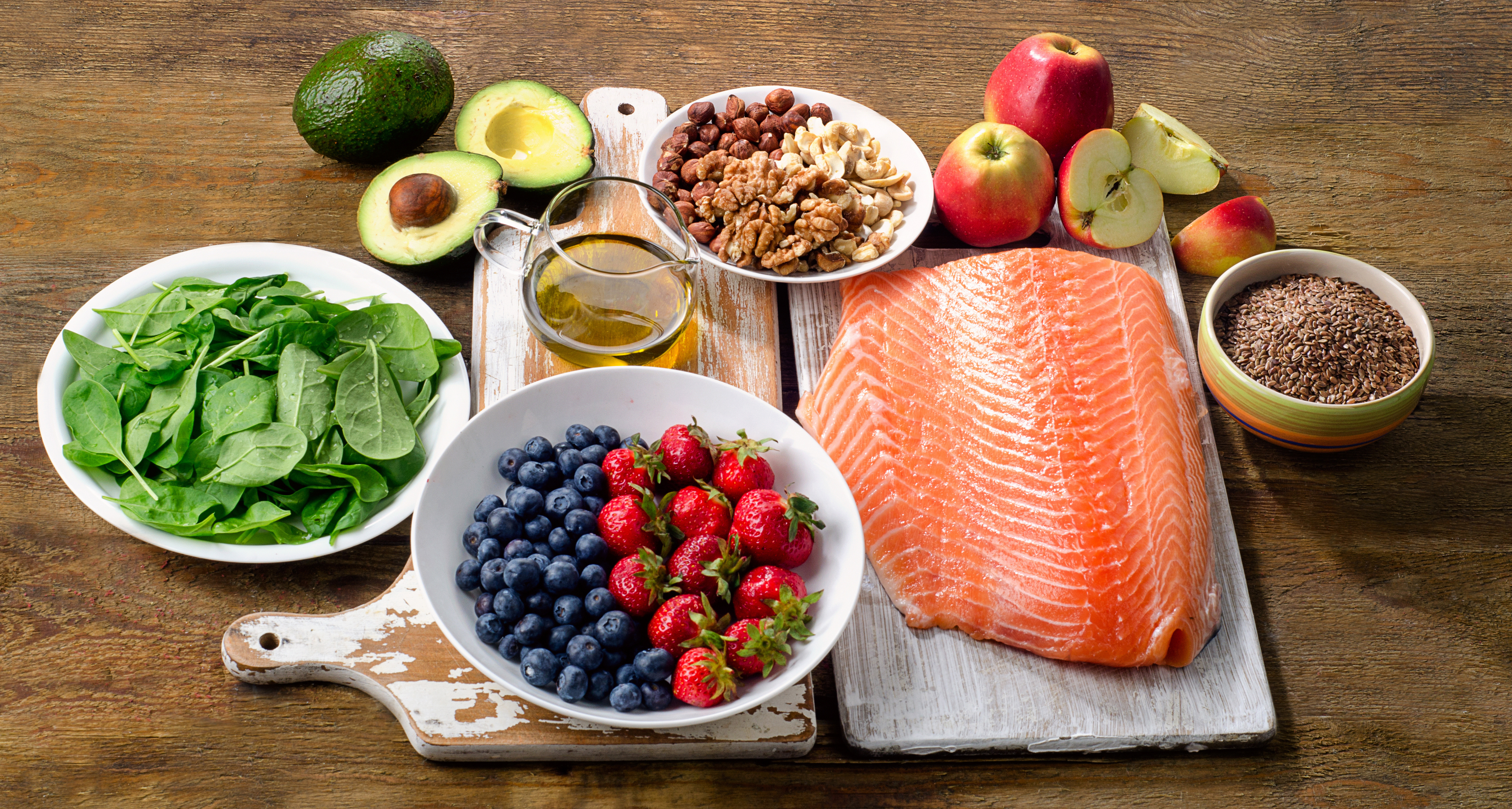Blog
Nutrition Series, Part 1
Macros and Micros

What comes to mind when you hear the words “macro” and “micro”? Do you think of carbs, protein, and fats, or do things like Keto, Paleo, or Atkins cross your mind? Do you think of zinc, iron, magnesium, or do you think of a big-box supplement store filled with various bottles and powders? Certain words have various meanings to different people so let’s start by defining some common terms and get started on the same page…
Macronutrients are what we eat in large amounts, from the Greek word “makro” meaning large, they make up our diet as a whole and are defined as proteins, fats, and carbohydrates. Macronutrients provide the calories (energy) in our diet. Proteins and carbohydrates provide 4 calories per gram, whereas fats provide 9 calories per gram. We will typically categorize our foods by the type and amount of macronutrients present. A food “rich” in something provides a majority or large portion of that nutrient. You have probably heard someone say a particular food is “rich” in calcium, iron, or fat. For example, avocados contain a large amount of fat per ounce, and while there are a small number of carbohydrates found in them as well, we do not categorize it as a “carbohydrate”, it is considered a “fat-rich” food. Common protein-rich foods are chicken, fish, eggs, turkey, beef, pork, beans, and shellfish. Foods that provide the majority of calories from carbohydrates are fruits, beans, starchy vegetables, beans, grains, and dairy. These foods can also provide fats and proteins but the amounts/ratios can vary. Foods that would be considered rich sources of fat would be oils, butter, nuts, and seeds.
Micronutrients, from the Greek word “mikros” meaning small, are just as important for cellular function but needed in smaller amounts compared to our macronutrients. Some examples of micronutrients would be calcium, magnesium, iron, B-vitamins, sodium, and potassium. Micronutrient deficiencies, while rare in modern-industrialized countries, can have detrimental effects on growth and development. For example, vitamin D deficiency can result in Rickets; a softening and weakening of bones. Micronutrients are vitamins, minerals, and trace elements, all of which can be found in varying amounts in different foods. They provide our cells with specific compounds needed for cellular function, hormone creation, or neurotransmitter function. Milk, for example, contains calcium that is needed for bone growth and cell signaling in muscle tissue. When eating a balanced diet (or properly supplemented diet), the general population is provided adequate intake of micronutrients for normal function.

Food Groups
Macronutrients and micronutrients are what provide our body with the energy (calories) and compounds needed for function on a metabolic level, now, let’s talk about food groups. The USDA (US Department of Agriculture) has moved away from the “Food Pyramid” many of us are probably familiar with and instead has developed “My Plate” as a guide to help people make balanced food choices at each meal. The USDA has 5 food groups as a part of the My Plate initiative: Dairy, Fruits, Grains, Vegetables, and Protein. Because foods have various amounts of macro and micronutrients, a well-balanced diet is encouraged for everyone.
Phytonutrients are essentially a sub-category of micronutrients and pertain to the antioxidants and other various substances found in plant foods that provide health benefits on a cellular level. They are not essential for our basic function but are being studied for various other health and disease prevention benefits. By eating a variety of fruits, vegetables, and grains with different colors, you get an array of phytonutrients that offer additional health benefits, many of which are still being studied. An example would be Lycopene, found in red and pink fruits and vegetables. Lycopene has been linked to a lower risk of prostate cancer.
It should be noted some chronic conditions and illnesses require limitations of certain macro/micronutrients. For example, someone with end-stage renal disease (ESRD) on dialysis must have certain amounts of potassium, phosphorus, and protein in their diet given the compromised function of their kidneys. Congestive Heart Failure (CHF) requires limited amounts of fluid and sodium in the diet to prevent fluid buildup in the body and difficulty breathing, among other side effects. Another example is Diabetes, controlled amounts of carbohydrates are required to maintain blood glucose regulation and prevent long-term detrimental health ramifications. For chronic illnesses, there is no “one size fits all” approach for dietary management. Registered Dietitian Nutritionists can help people determine appropriate diet composition based on chronic health conditions or fitness and lifestyle goals.
Various “fad” diets recommend restrictions of food groups based on macronutrient distribution or a school of thought behind the purpose and function of types of foods. Often, they label foods as “good” or “bad” and may promote certain timings of foods and fluids. Fad diets will always be a part of the conversation so we may as well touch on this now.
Cutting out entire food groups for short periods will almost always result in weight loss in the beginning. Since a large source of calories is being reduced from the diet, we would expect there to be a weight reduction. However, when that food group is added back into the diet, the weight is typically added back as well because the calorie deficit is no longer occurring. The type of weight loss is important to consider as well, in many cases a large portion of lean mass is lost, along with fat and fluid when a dramatic drop in calories occurs. The term “detox” should also be mentioned here, as this has become a buzzword over the last few years. Your kidneys and liver (and intestines) are constantly “detoxing” your body. If those organs stop working you will be truly “toxic” and will end up in the hospital. A detox diet that is mostly juice, tea, broth, etc. is a very low-calorie diet. A “detox” diet that causes an increase in stool output and frequency is essentially a malabsorptive diet. Both of these will cause weight loss, as mentioned above, however, the weight loss is not sustainable and those unwanted pounds will eventually make their way back.
There are times in various sports where a short-term, dramatic change in a diet pattern is required, but it should be noted that this is part of sport-specific training for a certain duration of time and should not be extrapolated to the general public. Balancing intakes of our macronutrients from the various food groups will ensure adequate micronutrient intakes. Portion control, well-spaced meals, and variety are time and again showing to be the ideal approaches to help encourage a healthy weight and long-term body composition goals.
Alright, let’s put all this together: A breakfast meal consisting of 2 eggs on 2 pieces of whole-grain toast, with ½ avocado (sliced or mashed) with a side of 1 cup blueberries and 8oz fat-free milk (or fortified milk alternative) will provide you all 3 macronutrient sources and all 5 food groups.
-
- Eggs- Macro: protein/fat, Food Group: Protein
- Toast- Macro: carbohydrates, Food Group: Grains
- Avocado- Macro: fat, Food Group: Vegetable*
- Blueberries- Macro: carbohydrates, Food Group: Fruit
- Milk- Macro: protein/carbohydrate, Food Group: Dairy
From a micronutrient standpoint, this breakfast will provide you good amounts of calcium, B-vitamins, antioxidants, Vitamins A, D, E, and K, iron, choline, riboflavin, phosphorus, potassium...the list goes on!
*Avocados are categorized as vegetables according to the USDA, although biologically they are fruits, like tomatoes-- I digress.

As you can see, a mixture of the intake of foods will provide your body with a variety of nutrients and calories from all of our macronutrient sources as well as an assortment of micronutrients. Food is our fuel and can be enjoyed while still meeting our health and fitness goals.
Proper hydration is just as important for our fitness and wellness goals, so be sure to check in soon as we discuss Hydration strategies and recommendations!
Let’s get back to the basics and make well-informed, consistent choices so we can reach our health goals while maintaining #strengthforlife.

About the author Jessie Gall, MS, RD, LD
Jess is a Metro-Atlanta-based dietitian in the state of Georgia with 8 years of experience as a Registered Dietitian in the hospital setting, as well as corporate wellness events, and individual counseling. She received her Bachelor of Science and Master of Science from Georgia State University and is a Licensed and Registered Dietitian Nutritionist.
Jess enjoys helping her patients have the “lightbulb moments” in their nutrition care and recommendations. Her “food philosophy” is that food is functional and fun! Eating for health does not have to be boring or tasteless. All things in moderation make for a more enjoyable, and healthy relationship with food. There is no one-size-fits-all approach to nutrition, but there are research-based recommendations, and she enjoys helping each patient/client find what works for their lifestyle, goals, and needs. Jess is also an NPC Bikini division competitor, NASM Certified Nutrition Coach and mother of twin boys.
Instagram @Jess_G_Fit

84 Comments